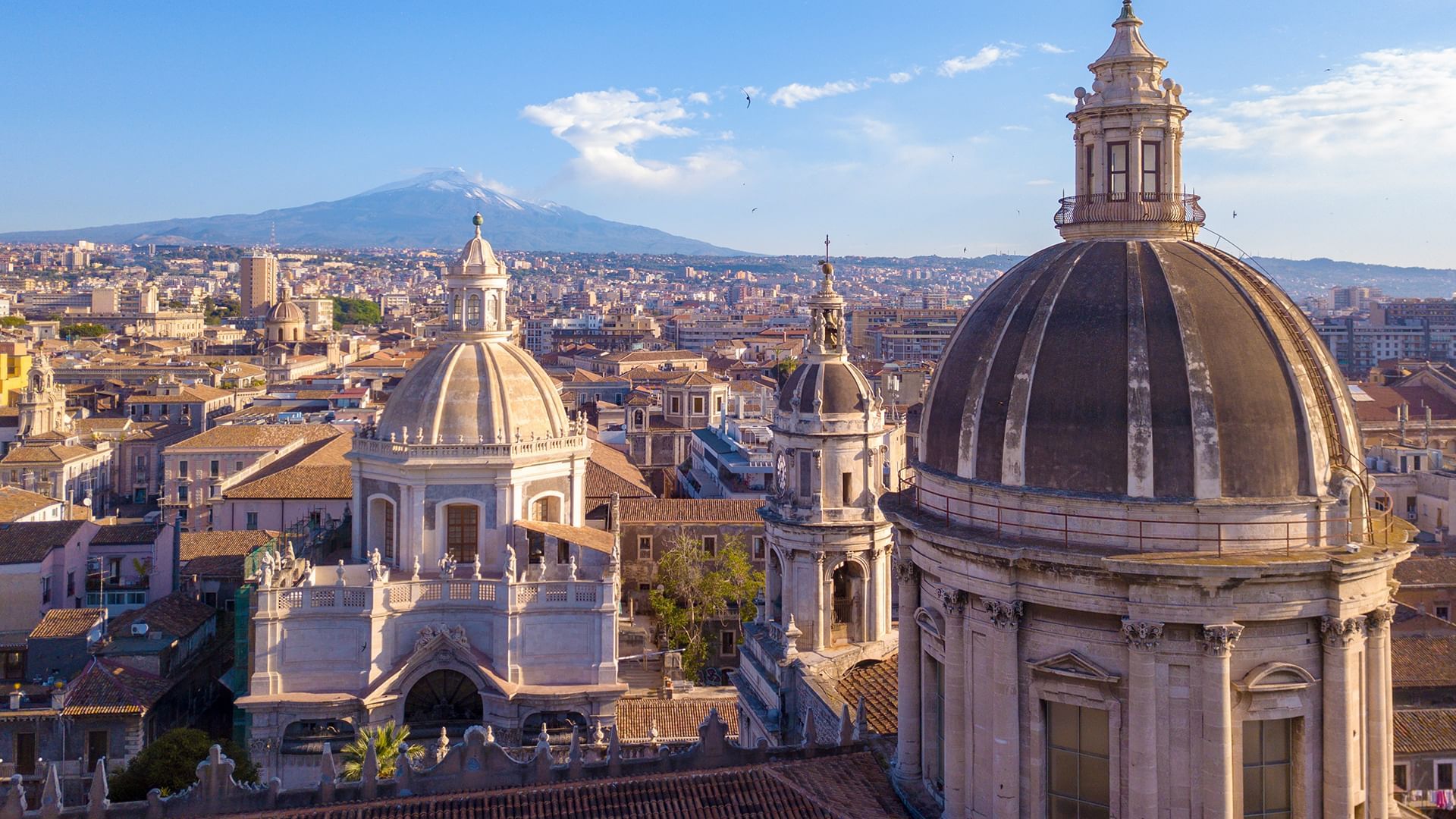A walk through the wonders of the historic city centre.
24 Jan 2020
Gruppo UNA
Sicily is a popular summer holiday destination for people who like to spend the whole day on lava rock cliffs overlooking the sea or the golden yellow beaches of the Etna province. But Sicily, and Catania in particular, is about a lot more than just the sea. Catania is all about the Via Etnea, the baroque promenade that bisects the city, climbing from the Duomo all the way up to the volcano.
The Cathedral of Sant’Agata in the Elephant’s Square
St. Agatha’s Cathedral is a great place to start out and discover the city’s artistic wonders. Located in Piazza Duomo, it is named after the patron saint of Catania, Agatha, to whom the people of Catania show great devotion. This monument was built over the ruins of a Roman building, the Terme Achilliane, which can be accessed from a side entrance to the Duomo. The interior is a Latin cross design with three naves; five separate altars lead off from a superbly-decorated marble funeral monument. Do not miss the magnificent Chapel of St. Agatha, in which the Saint’s relics are perfectly preserved. The cathedral is open every day. Visits are not allowed during religious services. Reservations are strongly recommended for guided tours.

The Greco-Roman theatre in the town centre
A five-minute walk along Via Etnea from Piazza del Duomo and you come to the Roman Theatre. Dating back to Imperial Rome, the theatre was built on a pre-existing Greek structure between the first and second centuries AD. Like many of the city’s buildings, it is made of marble and lava stone, the materials that lend the city its typical black and white colouring. Today, the cavea, orchestra and some parts of the stage may be visited. Other portions have, over the centuries, been converted into homes. The city is rich in underground rivers. The Amenano River still bathes the lower parts of the theatre, its waters once used for shows and evocative naval battles. The theatre is open for visits Monday to Sunday, 9 am. to 5 pm.
The Benedictine Monastery and the unmissable skyline
The Monastery of San Nicolò l’Arena, today a UNESCO World Heritage Site and home to the University of Catania, is a ten-minute walk from the theatre. A fine example of late Sicilian Baroque, the building was founded by Cassinese monks in 1558. Because the Monastery was rebuilt after a succession of earthquakes, it encompasses styles from different epochs. The whole building may be visited, right down to its foundations. The complex houses mosaics, inner courtyards, gardens and baroque fountains, making it one of the undisputed highlights of the city. Don’t miss visiting the Church of San Nicolò l’Arena, right next to the Monastery, from whose cornices you may admire a wonderful skyline along the Syracuse coast. Visiting hours: every day, 9 am to 5 pm.

Stop in to the city’s baroque gardens
Catania is more than just monuments, churches and large halls. Right in the town centre, take a stroll through Villa Bellini, the oldest park in the city. These beautiful gardens were founded in the eighteenth century at the behest of Ignazio Paterno Castello, Prince of Biscari. The original portion of the garden was commissioned following the fashions of the time: a monumental entrance, its Baroque style enhanced by water features, labyrinthine hedges and sculptures. The Villa is a place of leisure and relaxation. Stroll down its boulevards and you’ll come across hidden corners and new perspectives. The Bellini Gardens often stages cultural events and concerts. It is open every day, and closes at 10 pm.
Palazzo Biscari, Catania’s best-known palazzo
As you walk across from the Duomo to the famous Fish Market, call in at Palazzo Biscari, the historical residence of the Biscari Princes. Set within sixteenth-century walls, the Palace has been restored a number of times over the years, hence it features a blend of different styles. Its south-western side is rich in baroque ornaments; the south-eastern part is neo-classical in style. Inside, it is full of painted vaults and baroque ornaments, monumental marble staircases and imperious halls. Its impressive 160-metre elevation makes it the city’s largest and most magnificent baroque palace. It is open every day between 7 am and 1 pm, and between 3 pm and 7 pm. Guided tours may be booked on the website or at the Palazzo itself.
Where to stay in Catania?
The Palace Catania | UNA Esperienze, in Via Etnea, is the ideal place to stay and easily see the amazing sights of the historic centre. This historic luxury hotel has breathtaking views of Mount Etna from its large roof garden. The Gruppo Una hotel is in a completely-restored building that maintains a strong Sicilian identity. A highlight is to sample typical local dishes in the hotel restaurant while enjoying the city’s splendid skyline. Book your stay at Palace Catania now for an unforgettable experience.



